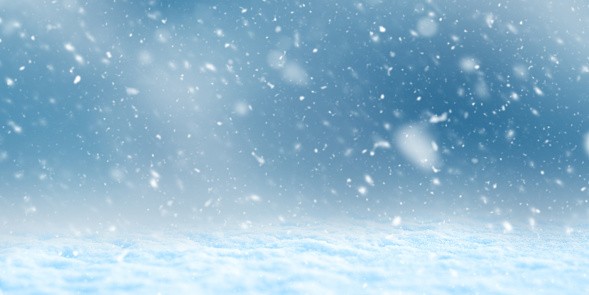
Snow is a type of precipitation formed way up in the clouds where it becomes cold enough to freeze the water vapor present there. In an extremely unusual phenomenon known as diamond dust, however, snow can also be formed out of a clear sky.
What Is Diamond Dust?
Diamond dust is a form of precipitation consisting of slowly falling, minute, unbranched ice crystals that often appear to float suspended in the air. They float through the air very slowly and refract sunlight, thereby glittering like floating diamonds.
Diamond dust does not fall like ordinary snow. It is able to fall through a completely clear sky, so it has garnered the name "clear sky precipitation."
Diamond dust usually consists of well-developed crystals with diameters of order 100 micrometers. This has the consequence that the single diamond is essentially invisible to the eye, yet en-masse, it shines like a glistening mist and takes the form of a simple six-sided diamond.
These crystals, which come into evidence when they mainly sparkle in the sunlight, can also result in halo phenomena and sun dogs. Within the cloudless sky, diamond dust swirls and shimmers, minute points of light in the sky reflecting all the colors of the spectrum.
Diamond dust tends to occur in clear and calm weather. Often, with the lack of clouds, this precipitation is bathed in sunlight or moonlight, hitting upon such mist to present a truly stunning, shimmering effect.
The visibility of diamond dust varies much, typically more than 0.62 miles (one kilometer). It may also fall constantly like ordinary snow showers for days. No matter how long it falls, it does ultimately accumulate.
Diamond dust can only be viewed in very few places, like Antarctica and the Arctic. The sparkly snow, sometimes, can be created in parts of Canada and the northernmost tier of the US when the temperatures drop cold enough.
READ ALSO : Lake Effect Snow Effects and How It Is Formed
How Is Diamond Dust Formed?
Meteorologists say that diamond dust is a special phenomenon that only happens when certain weather conditions occur. This is possible because of a weather phenomenon called temperature inversion.
Now, normally, air temperatures get colder as one travels from the ground upwards to higher and higher altitudes. With inversion, this is flipped: the cold air sits near the surface with warm air above it.
Precisely, this weather setup allows for diamond dust because more water vapor exists in the warmer air. As this warm, moist air mixes with colder air below it, its water vapor gets transferred into the cold air. Ice crystals finally form, even without any moisture from any clouds above.
Other than the cold temperature way above the sky, the near-ground air temperatures should be too cold as well. For water vapor to directly condense into ice crystals, temperature conditions must be colder than 32 degrees Fahrenheit (0 degrees Celsius).
This happens with dry snow only because the dry, individual ice crystals normally stay away from each other. Rays of sunlight hit the flat ice crystals located on the top layer of the snow, and they act much like little mirrors that reflect light.
The white diamond glitter effect is due to light that bounces off the top. The one that bounces back from the bottom surface is refracted more and reflects all colors of the rainbow.
RELATED ARTICLE : Are Snowflakes Really Uniquely Patterned? Know How These Tiny Ice Crystals Are Formed
Check out more news and information on Snow in Science Times.
© 2026 ScienceTimes.com All rights reserved. Do not reproduce without permission. The window to the world of Science Times.











